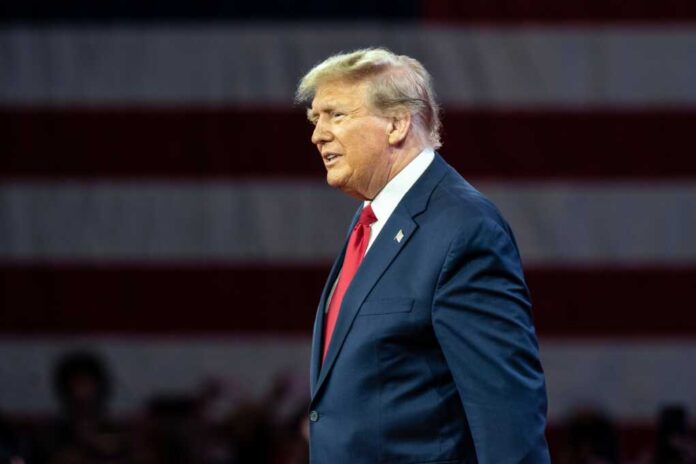
President Trump has signed the bipartisan ‘Take It Down Act’ into law, criminalizing the non-consensual sharing of explicit images, including AI-generated deepfakes.
At a Glance
- President Trump signs ‘Take It Down Act’ criminalizing non-consensual sharing of explicit images, including AI-generated deepfakes
- The Act mandates removal of such content within 48 hours upon victim’s request
- First Lady Melania Trump actively advocated for the legislation
- The law received overwhelming bipartisan support in Congress
- Inspired by the case of Elliston Berry, a teenager victimized by deepfake imagery
Legislative Milestone in Digital Privacy
On May 19, 2025, President Donald Trump signed the ‘Take It Down Act’ into law, marking a landmark federal initiative against the non-consensual distribution of intimate images, including those generated by artificial intelligence. The legislation introduces criminal penalties of up to three years in prison for violators and requires that online platforms remove flagged content within 48 hours of a victim’s request. Enforcement will be overseen by the Federal Trade Commission, which is tasked with ensuring swift action against digital exploitation, as detailed in a report by Politico.
The bill garnered overwhelming bipartisan support, clearing the House with a 409-2 vote and passing unanimously in the Senate. It was co-sponsored by Senators Ted Cruz and Amy Klobuchar and designed to respond to a surge in the misuse of AI to create disturbingly realistic explicit content, especially targeting women and minors, as highlighted in ongoing congressional testimony.
Watch a report: Melania Trump celebrates ‘Take It Down Act’ in fight against explicit deepfakes.
Advocacy and Personal Stories
First Lady Melania Trump emerged as one of the most vocal champions of the legislation. In a speech delivered in the White House Rose Garden, she warned about the dangers of emerging technologies, calling artificial intelligence and social media “the digital candy for the next generation,” and likening their addictive nature to psychological manipulation. Her remarks and lobbying efforts helped galvanize congressional support, as reported by The New York Post.
The bill was also shaped by the experience of Elliston Berry, a Texas teenager whose likeness was manipulated by classmates using AI to create fake nude images. Her case prompted a national outcry and drew bipartisan attention to the psychological and legal gaps in addressing such crimes. As detailed by The Texas Tribune, Berry’s story became a central reference point in committee hearings.
Implications and Future Outlook
The ‘Take It Down Act’ creates the first federal standard specifically tailored to combat AI-driven visual exploitation. While its goals have been praised by victims’ rights groups and tech ethicists, some digital rights advocates, including those cited in a Wired analysis, warn that the law’s broad enforcement provisions could chill legitimate expression or unintentionally sweep in artistic or journalistic uses of AI.
Still, the law’s passage signals a strong consensus that digital dignity must be protected. As AI continues to reshape how images are created and shared, this legislation may serve as a blueprint for future efforts to align innovation with individual rights—especially those of the most vulnerable.





























